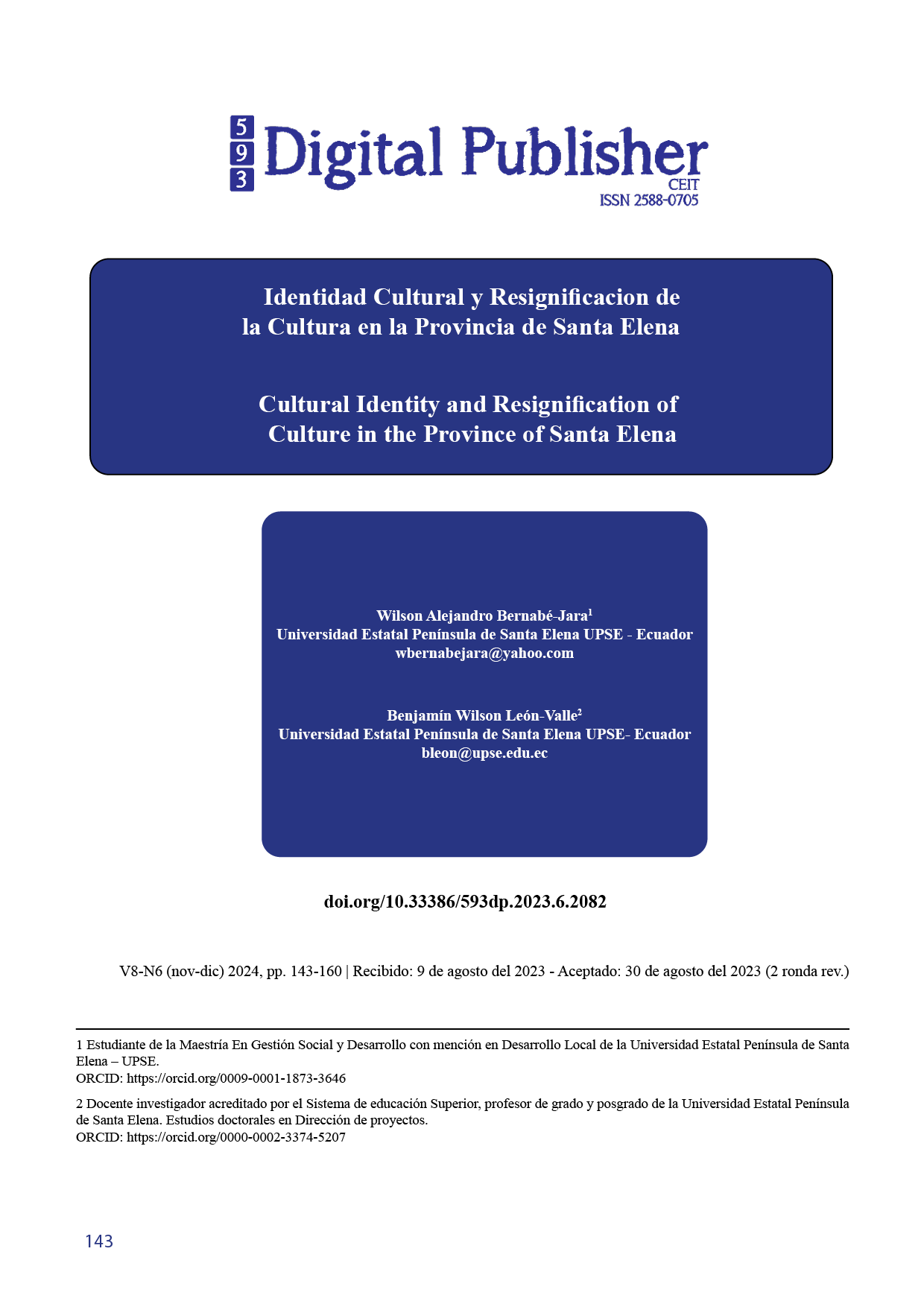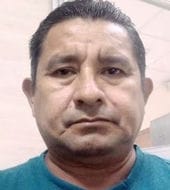Cultural Identity and Resignification of Culture in the Province of Santa Elena
Main Article Content
Abstract
Cultural identity is of the utmost importance for the people and communities of Santa Elena because it plays a fundamental role in the way in which the individual perceives himself and how others perceive him. On the other hand, the resignification of culture is a vital and necessary process that implies giving new meanings and reinterpretations to existing cultural aspects and thus keeping alive the identity inherited from our ancestors. The objective of this document is to identify the characteristics of cultural identity divided into four dimensions: cognitive, evaluative, affective, and behavioral, grouped into three components of ethnic identity such as: ethnic affirmation, elaboration or development of ethnic identity and ethnic behaviors, determining the possible factors that affect autochthonous social memory to take the necessary actions that contribute to the preservation and strengthening of cultural identity. The methodology has a mixed approach that involves processes of collection and analysis of both qualitative and quantitative information. The population sample corresponds to 388 respondents and 4 interviewed specialists. The results show us that, although the number of people who self-identify as indigenous people from the coast or Guancavilcas has increased (16,75%), the percentage is very low compared to those who consider themselves mestizos and whites (72,17%) this in itself generates an adverse factor related to the knowledge of ancestral culture in the life of the inhabitants of Santa Elena.
Downloads
Article Details

This work is licensed under a Creative Commons Attribution-NonCommercial-ShareAlike 4.0 International License.
1. Derechos de autor
Las obras que se publican en 593 Digital Publisher CEIT están sujetas a los siguientes términos:
1.1. 593 Digital Publisher CEIT, conserva los derechos patrimoniales (copyright) de las obras publicadas, favorece y permite la reutilización de las mismas bajo la licencia Licencia Creative Commons 4.0 de Reconocimiento-NoComercial-CompartirIgual 4.0, por lo cual se pueden copiar, usar, difundir, transmitir y exponer públicamente, siempre que:
1.1.a. Se cite la autoría y fuente original de su publicación (revista, editorial, URL).
1.1.b. No se usen para fines comerciales u onerosos.
1.1.c. Se mencione la existencia y especificaciones de esta licencia de uso.
References
Alvarez Litben, S. G. (2011). Parentesco, Política y Prestigio Social en los Pueblos de Indios del Partido de Santa Elena, Padrón 1803. Guayaquil: Ministerio de Cultura del ecuador.
Bajaña B., L. (2018). Estudio sobre la Identidad Guancavilca. Santa Elena: Casa de la Cultura Ecuatoriana Nucleo Santa Elena.
Barahona Néjer, A., & Añazco Aguilar, A. (2019). La Naturaleza como Sujeto de Derechos y su Interpretación Constitucional: Interculturalidad y Cosmovisión de los Pueblos Originarios. FORO Revista de Derecho, 16.
Cadena Alvarado, F., & Cadena Alvarado, R. (2015). Los cambios sociodemográficos en los cantones y parroquias de la provincia de Santa Elena, período 1.950 - 2.010. Santa Elena: Casa de la Cultura Ecuatoriana Benjamín Carrión.
Castro Freire, E. (2021). Actualización del Pensamiento en el Territorio Kayambi. Ecuador: Fundación Maquita.
Gartelmann, K. D. (2006). Las Huellas del Jaguar, Culturas Antiguas en el Ecuador. Quito, Ecuador: Casa de la Cultura Ecuatoriana.
González, I., & Varas Ibañez. (2006). Conservación de Bienes Culturales. Teorias, História, Principios y Normas. España: Ediciones Cátedra.
Guerra Cáceres, A. (1998). Apuntes para la historia de la península de Santa Elena . Santa Elena: Imprenta Guayaquil.
Hernández, j. (24 de 10 de 2022). Espejo de la generación no futuro. Diario Expreso.
Menéndez Zevallos, C. (1995). Nuestras Raíces Guancavilcas. Guayaquil: Casa de la Cultura Ecuatoriana.
Molano L, O. L. (2007). Identidad Cultural un Concepto que Evoluciona. Revista Opera, 17.
Paz y Miño, M. (2012). San Biritute lluvia, amor y fertilidad . Guayaquil: Jofracorp.
Pérez Brignoli, H. (2017). Aculturación, transculturación, mestizaje: metáforasy espejos en la historiografía latinoamericana. Revista Javeriana, 18.
Real Academía Española. (17 de 4 de 2023). Diccionario de la Lengua Española. Obtenido de https://dle.rae.es/identidad
Real Academia Española. (18 de 03 de 2023). Real Academia Española. Obtenido de https://dle.rae.es/cosmovisi%C3%B3n?m=form
Registro Oficial Suplemento 417 de 31 de marzo de 2011. (2011). Ley Orgánica de Educación Intercultural. Quito.
Reino Garcés, P. A. (2020). Lo que no cuenta la historia: conquista, colonia, independencia, república. Tungurahua: Casa de la Cultura Ecuatoriana, Nucleo de Tungurahua.
Rodríguez Jimenez, A. (2017). Métodos Científicos de Indagación y de Construcción del Conocimiento. Revista Escuela Administraci+on de Negocios EAN, 22.
Smith Castro, V. (2002). La escala de identidad etnica multigrupo (EIEM) en el contexto costarricense. Periódicos Electrónicos en Psicología , 21.
Stothert, K. E. (1977). Proyecto Paloindio: Informe Preliminar. Guayaquil: publicaciones del Museo Antropológico del Banco Central.
Uribe Villegas, M. A. (2005). Mujerrs, calabazos, brillo y tumbaga. Símbolos de vida y transformacion en la orfebrería Quimbaya Temprana. Universidad de Antioquia UDEA, 91.



